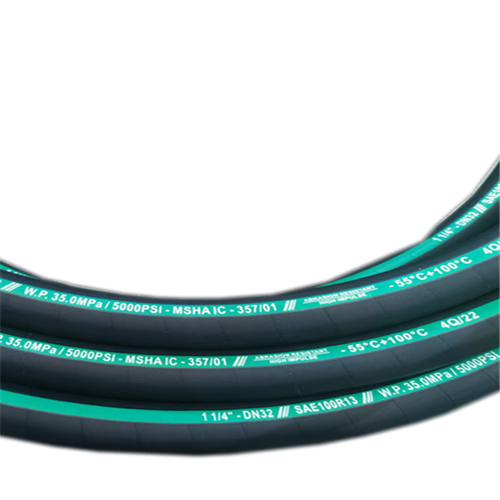335345435
Oct . 21, 2024 21:32 Back to list
OEM SAE 100R14 Supplier for High-Quality Hydraulic Hoses and Fittings Solutions
Understanding OEM SAE100R14 Suppliers Key Insights
When it comes to hydraulic systems and other fluid transfer applications, hoses play a crucial role. One of the most reliable and widely used hoses in the industry is the SAE100R14. This standard defines a type of hose designed specifically for high-temperature and high-pressure applications, making it essential for various sectors, including automotive, aerospace, and industrial manufacturing. In this context, Original Equipment Manufacturer (OEM) suppliers of SAE100R14 hoses become vital components for businesses seeking quality, reliability, and performance in their operations.
What is SAE100R14?
SAE100R14 is a specification set by the Society of Automotive Engineers (SAE), which outlines the requirements for PTFE (Polytetrafluoroethylene) hoses. These hoses are characterized by their excellent resistance to a wide range of chemicals, high temperatures, and pressures. Typically, SAE100R14 hoses come in two main types—one for medium-pressure applications and another intended for high-pressure use. The versatility of these hoses makes them suitable for various applications, such as transfer lines for lubricating oils, chemicals, and gases.
Importance of OEM Suppliers
Choosing an OEM supplier for SAE100R14 hoses is pivotal for businesses looking for quality assurance and performance consistency. OEM suppliers are manufacturers that produce parts and equipment that can be sold under another company's brand. Working with reputable OEM suppliers provides several advantages
1. Quality Assurance OEM suppliers are committed to adhering to stringent industry standards. They invest in modern technology, quality control measures, and skilled labor to ensure that their products meet the necessary specifications. This guarantees that the SAE100R14 hoses you purchase will perform reliably in demanding environments.
2. Customization OEM suppliers often provide customization options to meet the specific needs of their clients. Whether you require different lengths, diameters, or additional features, reputable OEMs typically have the capacity to tailor products to fit unique applications.
3. Technical Support OEM suppliers usually bring a wealth of expertise to the table. They can offer technical support and guidance on the best applications for SAE100R14 hoses, helping clients make informed decisions that optimize performance and safety.
oem sae100r14 supplier

4. Cost-Effectiveness By partnering with OEM suppliers, businesses can often secure more competitive pricing, especially when ordering in bulk. This can significantly impact the overall operational costs without compromising on quality.
5. Reliability and Reputation Established OEM suppliers often have a long track record of reliability and customer satisfaction. Their reputation in the industry can be a telling indicator of the quality and durability of their products, allowing clients to build trust and confidence in their supply chain.
Selecting the Right OEM Supplier
Finding the right OEM SAE100R14 supplier is crucial to ensuring success in your operations. Here are some factors to consider
- Certifications and Standards Look for suppliers that hold relevant certifications, such as ISO 9001, which indicates adherence to quality management systems. - Product Range Ensure the supplier has a comprehensive selection of SAE100R14 hoses and other related products. - Customer Reviews Check testimonials and reviews from previous clients to gauge the supplier's reliability and product quality.
- After-Sales Support Consider suppliers that provide strong after-sales service, including warranty policies and support.
Conclusion
In conclusion, understanding the role of OEM SAE100R14 suppliers is essential for businesses looking to invest in high-quality hose solutions. The benefits of partnering with reputable suppliers, including quality assurance, customization options, and technical support, can significantly enhance operational efficiency. As industries continue to demand higher standards for performance and safety, sourcing from established OEM suppliers becomes not just an option, but a necessity for maintaining competitive advantage in the market.
-
SAE 100 R17 Black Smooth Cover Hydraulic Hose
NewsMar.07,2025
-
SAE 100 R17 Black Smooth Cover Hydraulic Hose
NewsMar.07,2025
-
SAE 100 R17 Black Smooth Cover Hydraulic Hose
NewsMar.07,2025
-
SAE 100 R17 Black Smooth Cover Hydraulic Hose
NewsMar.07,2025
-
SAE 100 R17 Black Smooth Cover Hydraulic Hose
NewsMar.07,2025
-
steel wire braided hydraulic hose
NewsMar.07,2025



